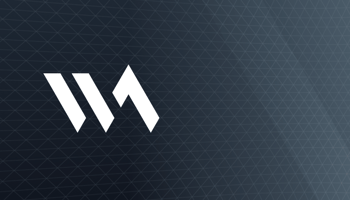Client communications are a constant focus for financial institutions – you have to keep customers...
4 Steps to Building a Successful Omnichannel Banking Strategy

Having a single e-banking solution used to be enough to set a bank apart, even if it was just on desktop. Customers would struggle through the process of using desktop versions of sites on their phones and not really think much about it, or they would tolerate a minimalist mobile experience because at least their bank had a way for them to check their balance.
Today, though, disconnected solutions stick out like a sore thumb, making banks seem outdated and turning frustrated customers into former customers in many cases.
Fortunately, omnichannel banking has become the norm, and it is more accessible than ever for banks of every size. Regional banks can provide a holistic experience for their customers that connects all their data in one experience that can be accessed in whatever way they prefer.
Why You Need an Omnichannel Banking Strategy
Building an omnichannel banking experience that can compete with the “big guys” requires a good deal of forethought and planning, but it can be done – and it’s worth it!
Here are a couple things to keep in mind when thinking through your omnichannel banking strategy:
What do your customers need?
Omnichannel banking allows you to meet your clients where they are with an experience catered to them. If it’s a small business owner, they may want something that is more designed around their business. High net worth investors may care more about the wealth portal. Consumer retail clients may want something entirely different. How can you meet your clients where they are?
How can you capture more of what’s already within your walls?
Not only does capturing all of your customer’s data in one place make it easier for them to manage their finances, it also positions your team with the understanding they need to be proactive about increasing wallet share. Simply capturing more of the accounts within your own four walls can result in growth that could easily exceed 5x.
With that in mind, let’s look at the four steps of implementing an omnichannel strategy, and how Wealth Access helps regional banks across the country do the same.
Case study: Find out how Wealth Access helped CG Financial Services build a truly modern client experience.
4 Steps of Building an Omnichannel Strategy
Step 1: Understand Your Customers
Any great banking experience is built on a firm foundation of understanding who your customers are and what they need in a banking experience. In order to do that, we recommend doing the following three things:
1. Take two surveys – one internal and one external
Ask your customers and your team about what they need most
2. Identify customer touch points
If you can understand where your prospects come from and how your customers already interact with the tech you provide, you can identify what’s working and what’s not.
3. Create a Customer Journey Map
A Customer Journey Map is a way of formally mapping out where customers come from, what they do when they’re with you, and why they leave.
Step 2: Build an Omnichannel Framework
In order to build a truly connected experience, you have to be able to make sure your systems and data all talk to each other and can be accessed from any touchpoint. Wealth Access provides an open API framework that allows you to plug in practically any data source to any system. (See how it works in our offerings like Wealth Access for Business or Digital Banking.)
In addition, look at how your customer experience can be made more consistent across the board. Draw from the insights gained from your Customer Journey Map to see where data needs to be connected and how it can be presented in a way that matches from channel to channel.
Step 3: Pick Your Tech
Now that you know your customers’ needs and the kind of CX you want, the third step comes down to which tools you want to build it with and which partner you’ll work with to bring it to fruition.
This step can be broken down into three mini-steps:
1. Assess your Tech Needs
Perform a SWOT analysis (Strengths, Weaknesses, Opportunities, Threats). Make sure to get employee feedback so you get the boots-on-the-ground input as opposed to just leadership’s opinions.
2. Evaluate Tech Partners & Vendors
When it comes to choosing a tech partner to build your CX, schedule discussions with prospective vendors and partners. Present them with the information you’ve gathered in steps one and two. Leave nothing out.
Choosing the wrong tech partner can have a disastrous impact on the long-term success of your omnichannel banking strategy. Here are a few qualities to consider:
- Does the company have a history of working with financial institutions? If so, they will have a better understanding of what you need and may even be able to identify issues you haven’t even considered due to their experience in the industry.
- Are they flexible, or will they try to force you to fit into the exact same white-labeled solution as all their other clients?
- Will they act as true partners, helping you think through the strategy of your decisions, or will they simply do as they’re told?
3. Implement the Right Tech
Once you’ve chosen your partners and vendors, it’s time to start building your CX tech stack.
Step 4: Implement Your Omnichannel Strategy
Each step in this process is incredibly important, and the final step is no different. Successfully carrying your omnichannel strategy across the finish line by training your team and monitoring their progress is one of the most common failure points we see at regional banks.
The first step is to train your employees in how to properly use the new system. Schedule multiple training sessions, and when you feel like you’ve scheduled too many, do one more to be sure everyone has received enough.
Getting your team on the same page from the start is the difference between a successful launch that basically runs itself, and one that requires frequent, heavy maintenance.
Training will likely center around your CRM. Making sure your team knows how to input info and how to view info in a way that allows them to best serve a customer at any given moment will make sure you’re on the path to success.
Lastly, you want to be continuously monitoring and improving your strategy. No rollout is perfect from the get-go. You may need to revise your Customer Journey Map and adjust accordingly.
Schedule check-ins on a quarterly, biannual or annual basis where you can sit down and look at the data to see how real customer interactions should inform your decisions going forward.
Build an Omnichannel Strategy with Wealth Access
If your team takes the time to:
- Understand your customers
- Build a framework
- Pick your tech carefully
- Implement your strategy
…then you’re on the path to launching a successful omnichannel banking strategy for your bank.
At Wealth Access, we’ve built and launched omnichannel strategies with financial institutions of all sizes.
Want to learn more about how our team could help you build a CX that your customers and employees love? Click here to schedule a demo today.



